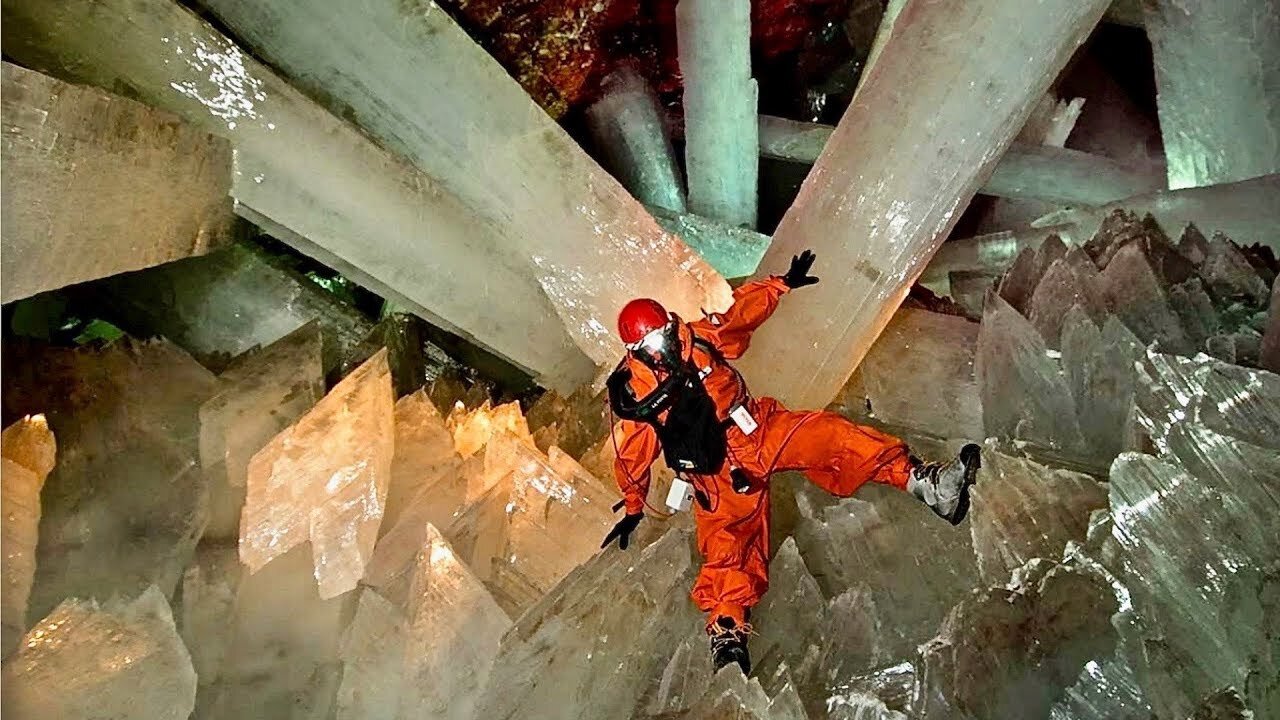Premium Only Content

Ancient Discovery - Gigantic Cave Crystals With 50,000 Year Old Microbes Living In Them
Scientists have turned up truly ancient microbes. They extracted them from giant cave crystals in Mexico. The stowaways may have survived there, unseen, for tens of thousands of years, new data indicate. Vastly different from nearly all other life-forms known, these germs offer a good indication of how resilient life can be in extremely harsh environments — even, potentially, conditions on other worlds.
“These organisms are so extraordinary,” says Penelope Boston. She is the director of NASA’s Astrobiology Institute in Moffett Field, Calif.
Boston spoke here during a February 17 news conference at the annual meeting of the American Association for the Advancement of Science. The microbes she described are not closely related to any known genus, she said. Some of their closest relatives live in caves halfway around the world. Others make their homes in volcanic soils or thrive on toxic chemicals, such as toluene (TAHL-you-een).
Full of lead, silver and zinc, the Naica Mine is in Chihuahua, Mexico. For eight years, Boston was part of a team probing microbes there. The crystal stowaways they turned up had been in fluid pockets inside massive crystals of calcium sulfate.
One might think of these microbes as having been tucked away in a time capsule for 10,000 to 50,000 years. They weren’t dead, just in suspended animation — perhaps for the entire time. They “remained viable,” Boston reports. In the lab, her team woke them up and studied their genetic material. The scientists also probed the genetic material in microbes on walls of the cave and elsewhere near the crystals.
Microbes from inside the crystals appear similar to — but not quite the same as — those on the cave walls and nearby areas, Boston says. Her team also thinks its age estimates for the crystal-trapped microbes are solid.
The new findings have not yet been published in a scientific journal. But if confirmed, these microbes would represent some of the toughest extremophiles (Ex-TREE-moh-files) on Earth. These are organisms that live in extreme conditions. They might come from where it’s extremely hot, such as near a volcano. Others may live in the ocean’s great depths or in around toxic chemicals. The Naica Mine microbes came from 100 to 400 meters (330 to 1,300 feet) below Earth’s surface. Temperatures there run 45° to 65° Celsius (110° to 150° Fahrenheit).
The new data show that microbes can be quite hardy. Almost any habitat can nurture some type of microbe. And that’s promising news in the hunt for life beyond Earth. It means that for life to exist on some distant planet, the conditions there may not have to match those on Earth.
Researchers are starting to plan probes to other worlds. These include Jupiter’s moon Europa and Saturn’s moon Enceladus. The new discovery in Mexico is a reminder of how little scientists know about the range of microbes that make their home on Earth. What scientists do not want is to risk that any of them might stow aboard a spacecraft sent to space, notes Cassie Conley. She’s NASA’s planetary protection officer. It’s her job to make sure that Earth’s microbes don’t contaminate other planets.
“If you took some of these organisms from Earth and put them elsewhere, they may do just fine,” she explains. That means Earth’s germs could one day end up living on — and polluting — other worlds.
Music: Kaddish (Angelic Instrumental) by Dhruva Aliman
Amazon- https://amzn.to/3dgKA52
https://music.apple.com/us/artist/dhruva-aliman/363563637
https://dhruvaaliman.bandcamp.com/album/hard-to-get-along
http://www.dhruvaaliman.com/
Spotify - https://open.spotify.com/artist/5XiFCr9iBKE6Cupltgnlet
-
 49:16
49:16
Knowledge Land
7 days agoThe Prehistoric Volcano That Nearly Wiped Out All Humanity - Full Documentary
402 -
 3:01
3:01
KGTV
2 years agoExploring the Living Coast Discovery Center
2 -
 0:10
0:10
Tuppy's Farm
2 years agoLiving with leeches
21 -
 18:38
18:38
VSiNLive
1 day agoProfessional Gambler Steve Fezzik LOVES this UNDERVALUED Point Spread!
47.5K9 -
 LIVE
LIVE
Right Side Broadcasting Network
9 days agoLIVE REPLAY: President Donald J. Trump Keynotes TPUSA’s AmFest 2024 Conference - 12/22/24
10,557 watching -
 4:31
4:31
CoachTY
16 hours ago $12.14 earnedCOINBASE AND DESCI !!!!
52K7 -
 10:02
10:02
MichaelBisping
16 hours agoBISPING: "Was FURY ROBBED?!" | Oleksandr Usyk vs Tyson Fury 2 INSTANT REACTION
12.5K7 -
 8:08
8:08
Guns & Gadgets 2nd Amendment News
2 days ago16 States Join Forces To Sue Firearm Manufacturers Out of Business - 1st Target = GLOCK
63K62 -
 10:17
10:17
Dermatologist Dr. Dustin Portela
1 day ago $12.40 earnedOlay Cleansing Melts: Dermatologist's Honest Review
85.8K5 -
 1:02:20
1:02:20
Trumpet Daily
2 days ago $31.29 earnedObama’s Fake World Comes Crashing Down - Trumpet Daily | Dec. 20, 2024
54.5K40